Swaying and dancing in the breeze, ornamental grasses steal the show with their feathery seed heads and autumnal hues.

Paying homage to the cascading brilliant fall leaves, the motion of ornamental grasses adds to the end-of-season celebrations.
Ornamental grasses in mass plantings feature layers of colorful movement waving goodbye to the southward migrating birds.

And the seed-laden bristles welcome winter-hardy wildlife, providing snacks to passersby.
Inspired by the native grasses and sedges that adorn our river valley, ornamental grasses in golden, bronze, and flame colors are at their prime in autumn.
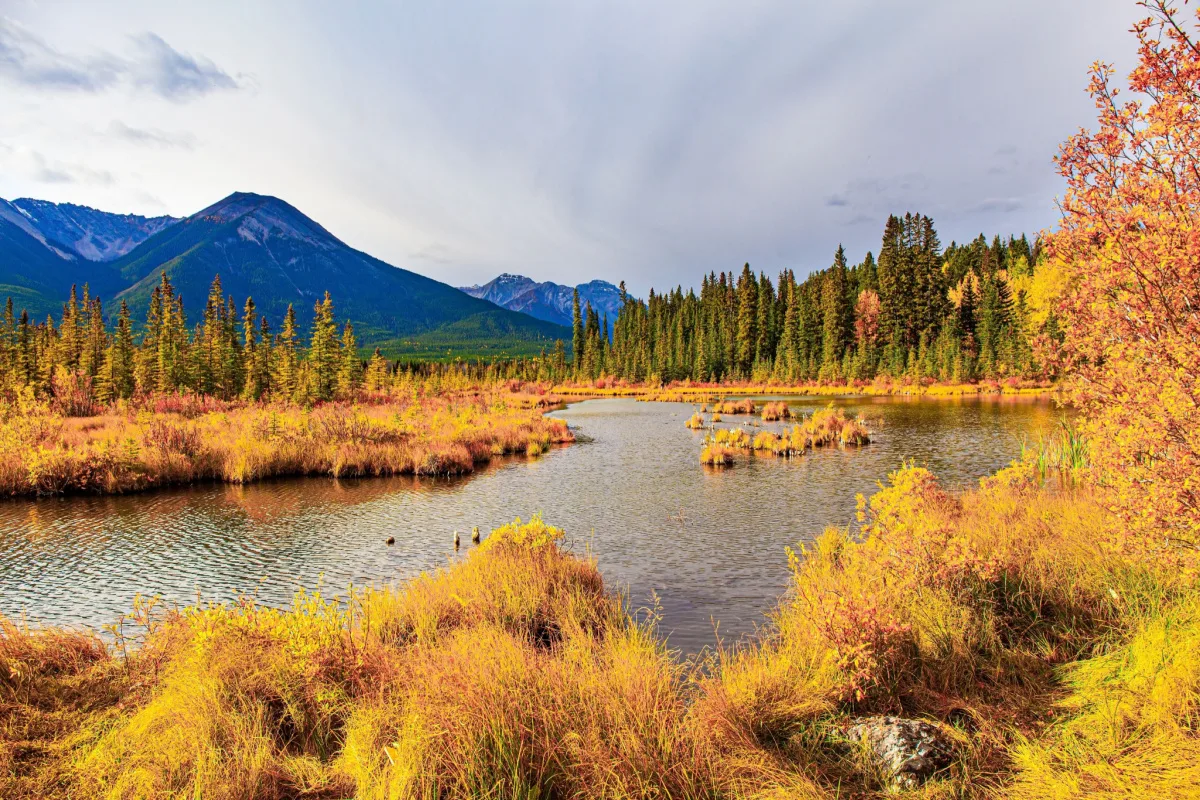
Arching, bowing, and nodding ornamental grasses provide graceful contrast to vibrant falling foliage.
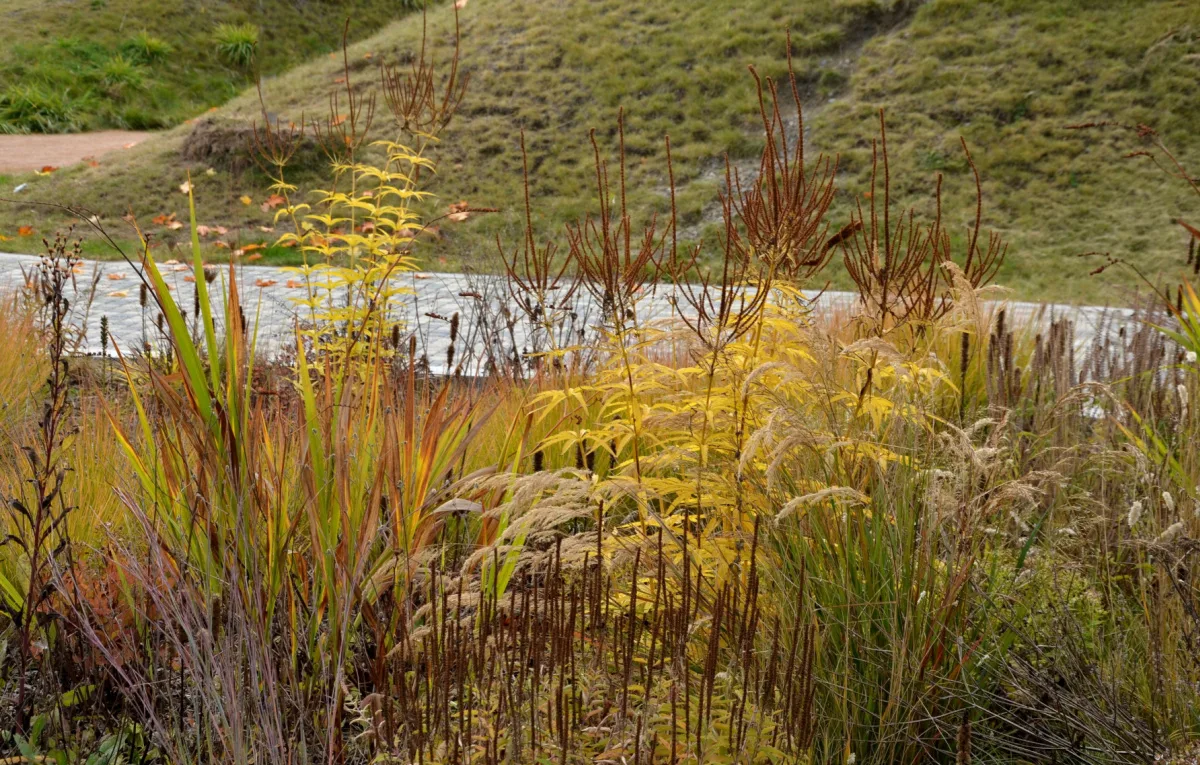
Dramatic standing ovations from stiff upright ornamental grasses distinguish themselves amongst stark barren branches.
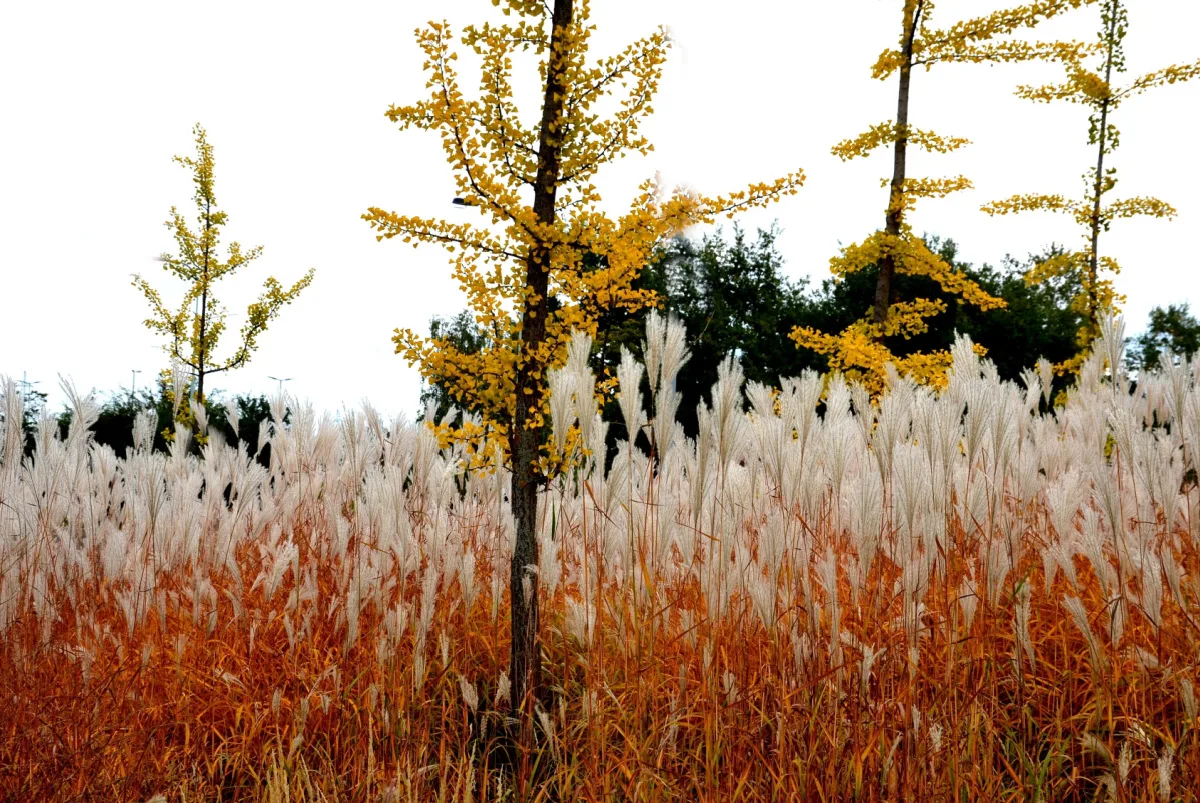
The perfect foil to ease the eye in all garden seasons, ornamental grasses companion beautifully with our favorite fall-flowering perennials.
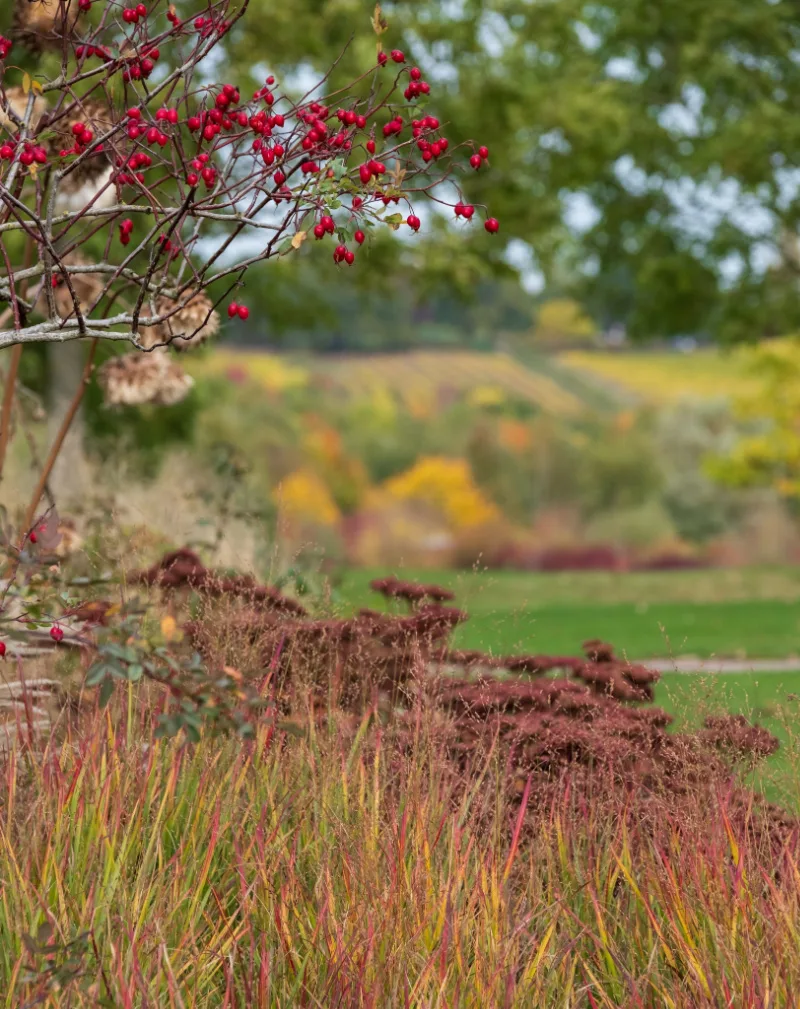
In fall, ornamental grasses are gorgeous in mass planting, glorious as individual specimens, spectacular as underplanting, and particularly precious in group plantings and borders.
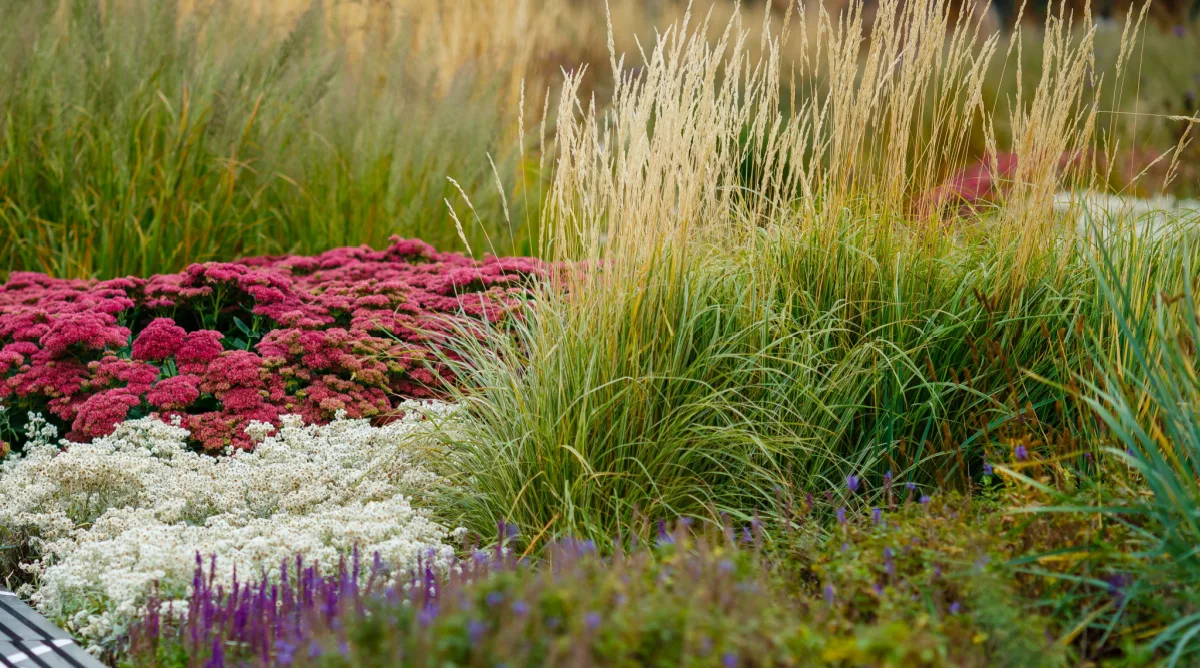
Whether upright or cascading, perennial and annual ornamental grasses are great in fall-hanging baskets.
Try them with fall-blooming mums or other favorite plants for fall containers.
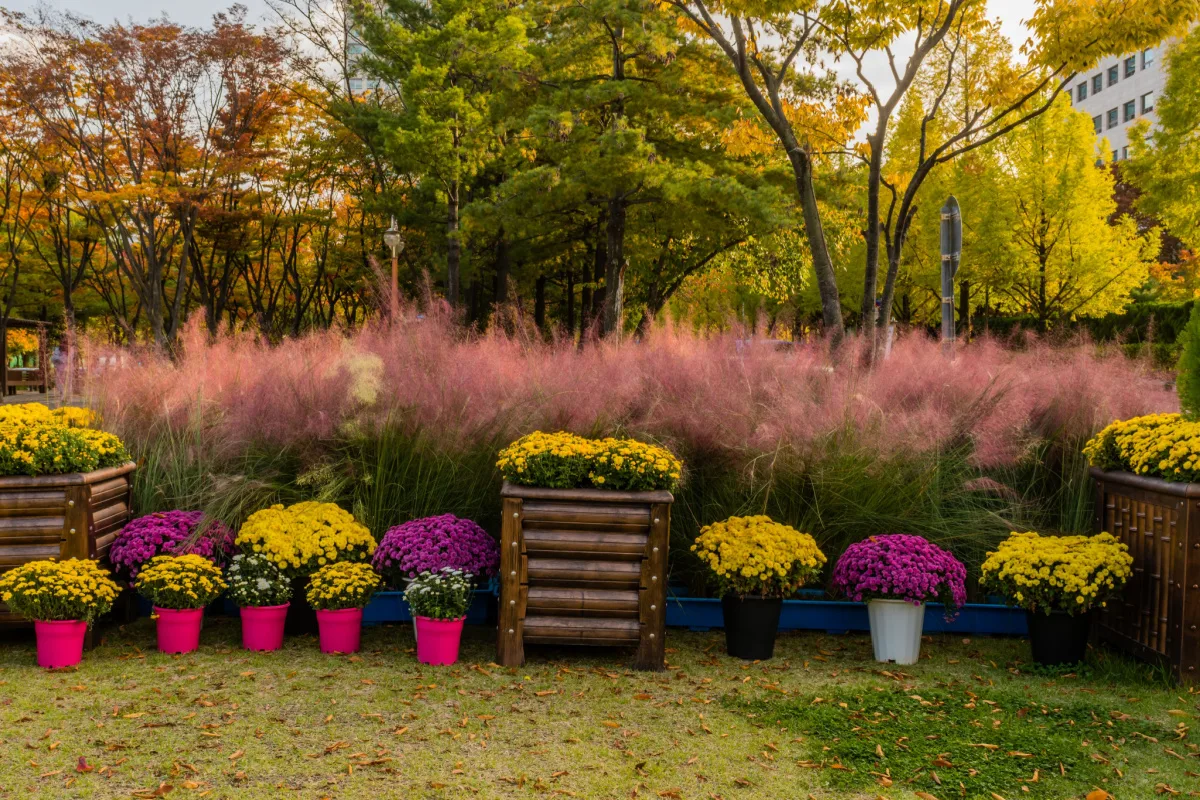
Many ornamental grasses add drama to autumn displays and fall-themed bouquets with their long slender foliage and interesting seedheads.
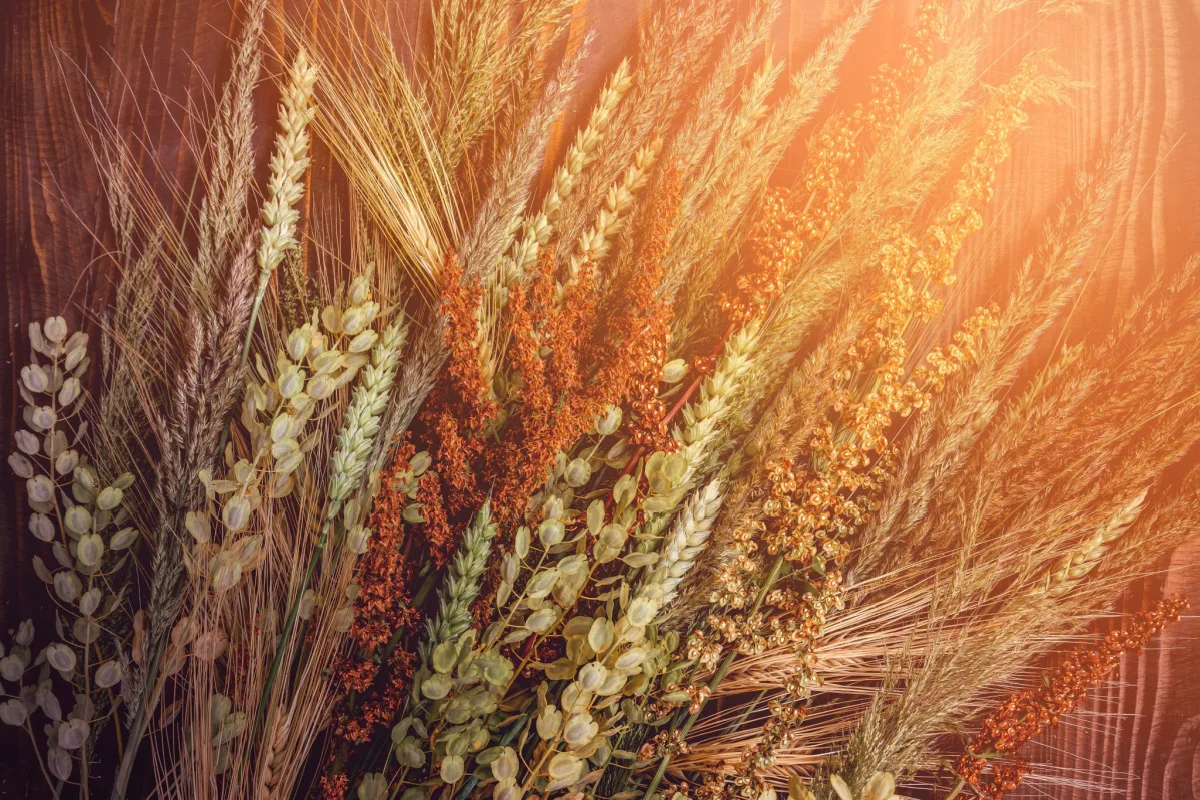
With long bloom times and fall season spectacles, most ornamental grasses perform well at the season’s end.
Shining above the rest, here are our best ornamental grasses that steal the show in fall.
12 Ornamental Grasses That Steal the Show in Fall
1. Sedge (Carex sp.)
Form is the function of sedge varieties. Mounds of cascading fine narrow foliage, the signature trait of the large Carex genus that boasts 2000 species.
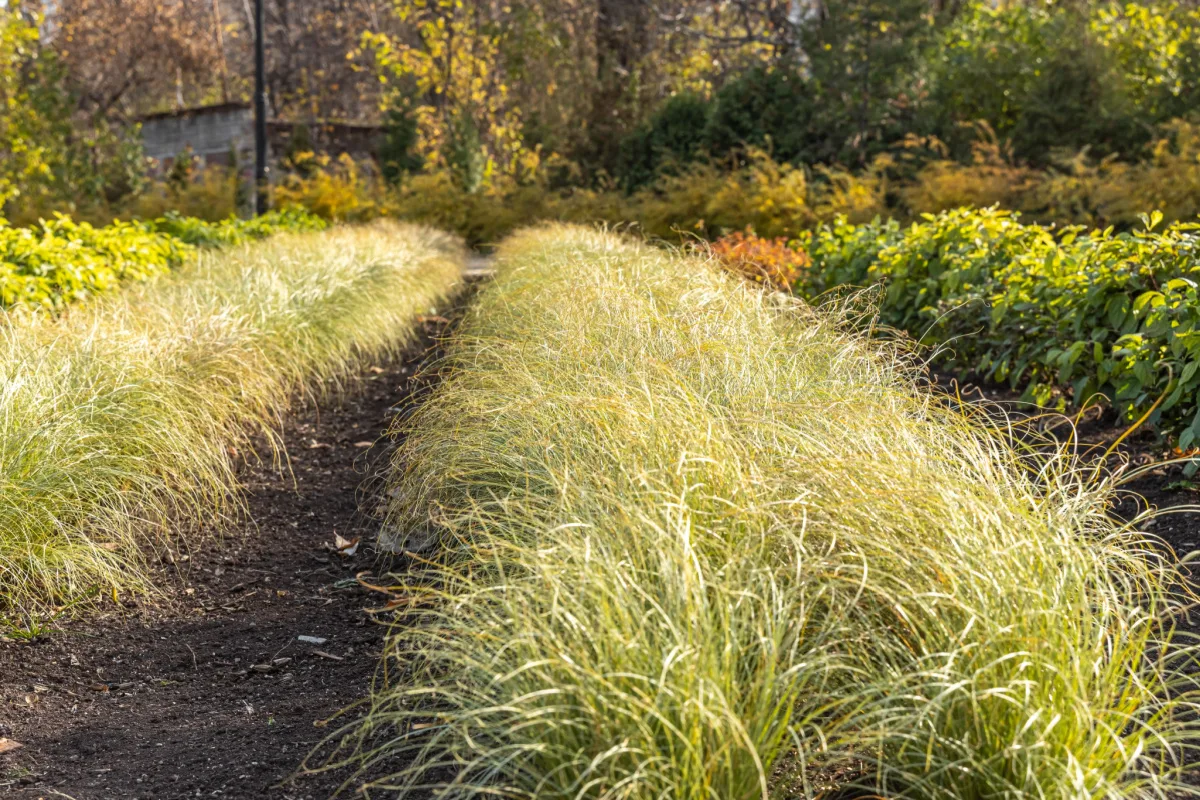
Our top contenders, are two North American native varieties, Foothill sedge, Carex tumulicola, for zones 8 to 10, and Pennsylvania Sedge, Carex pensylvanica, hardy in zones 3 to 9. Each creates structurally interesting 12-inch-plus arching mopheads.
Craving deeper autumn color? Evergold Weeping Sedge, Carex oshimensis ‘Evergold’ of Japan has warm yellow variegation, and Bronzita Sedge, Carex comans of New Zealand is a bronze mound of narrow leaves.
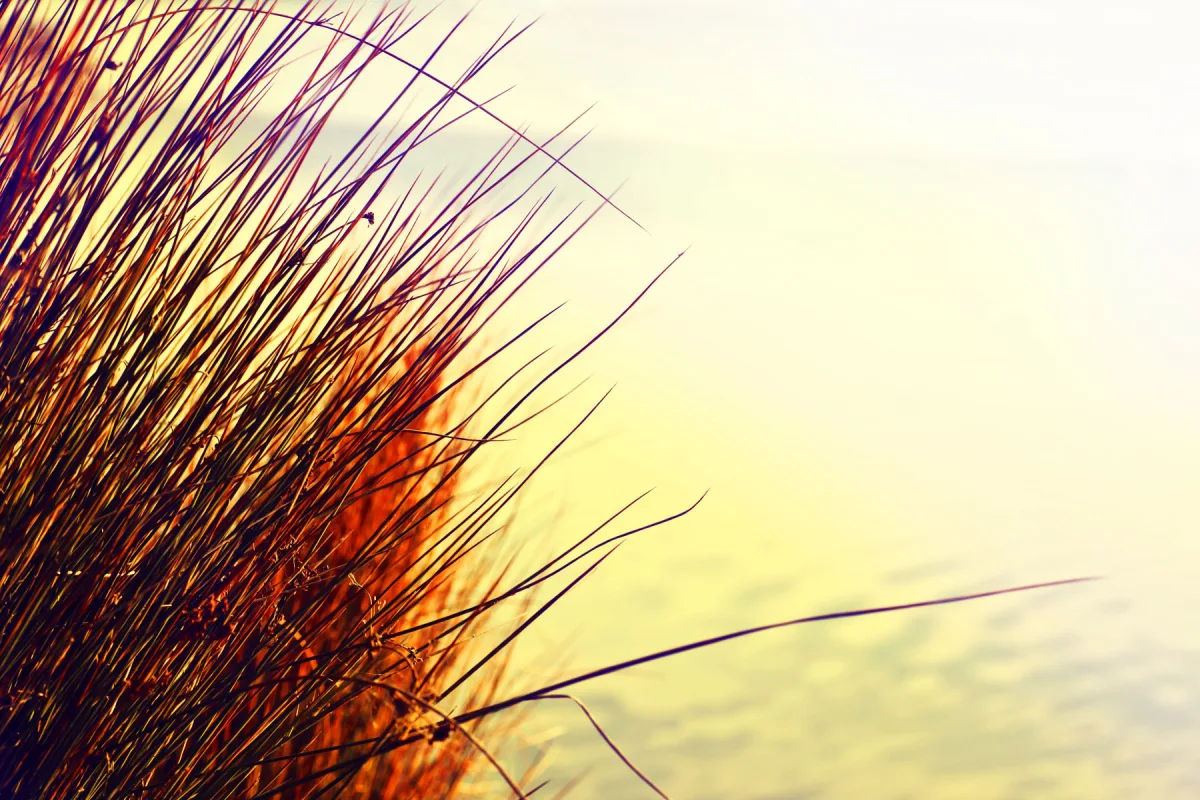
Sedges love full sun to part shade and prefer well-draining soils.
2. Blue Oat Grass (Helictotrichon sempervirens)
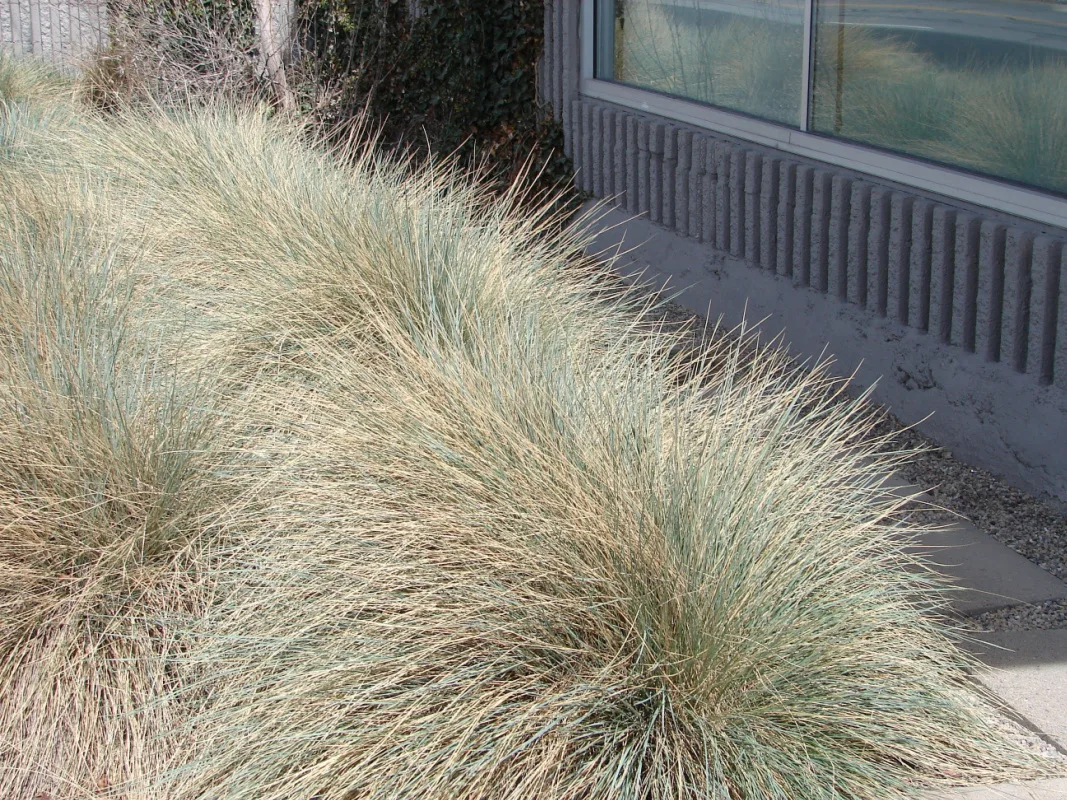
This tidy radiating blue-green evergreen grass is clump-forming with airy dancing seed heads in fall.
The sturdy steel-blue foliage taper to a fine point, adding contrast to fall-themed garden displays.
In zones 4 to 9, the bristly clumps grow two feet by three feet wide.
3. Pink Muhly Grass (Muhlenbergia capillaris)
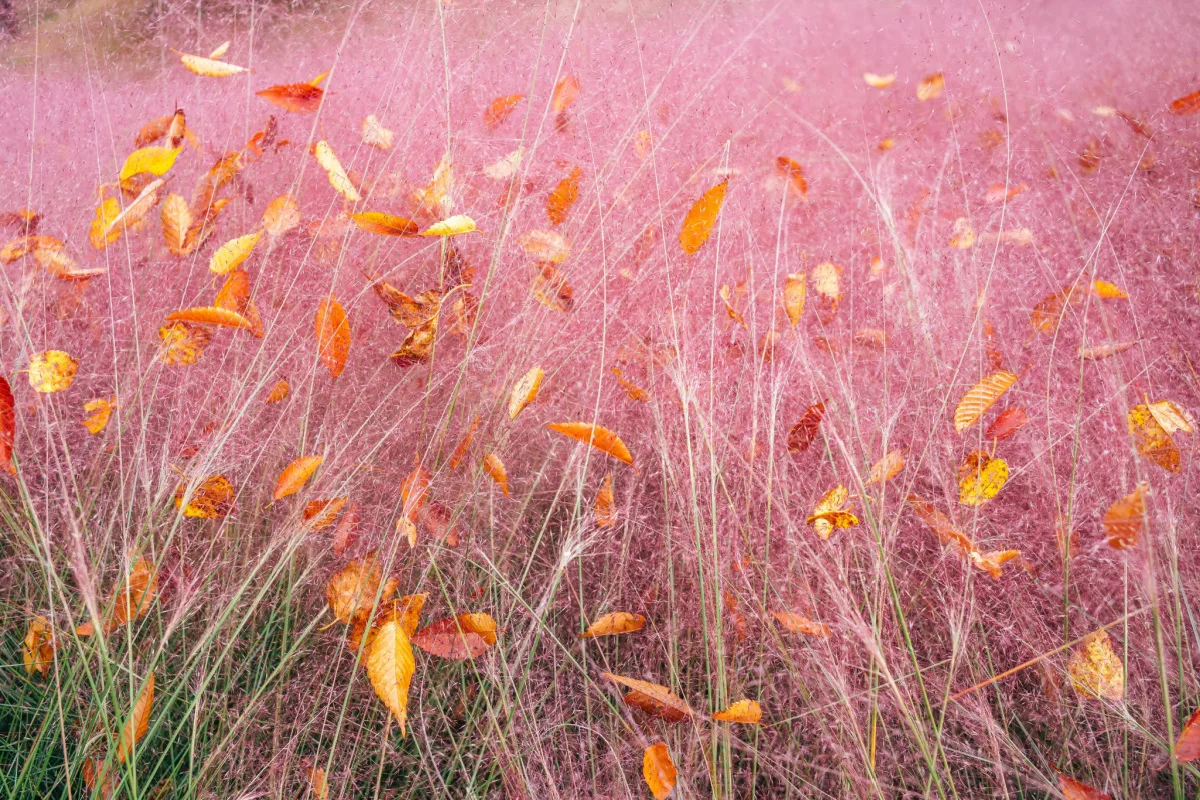
Seemingly invented in fairytale dreams, Pink Muhly Grass burst with soft pink fuzzy flowers in fall.
Plant Pink Muhly grass in groups or mass plantings to show off the cloud effect.
The 3-foot tall and wide grasses bloom in pink in fall and fade to brown but persist throughout the winter.
This native plant is extremely drought tolerant once established and thrives in zones 6 to 9.
4. Feather Reed Grass (Calamagrostis x acutiflora)
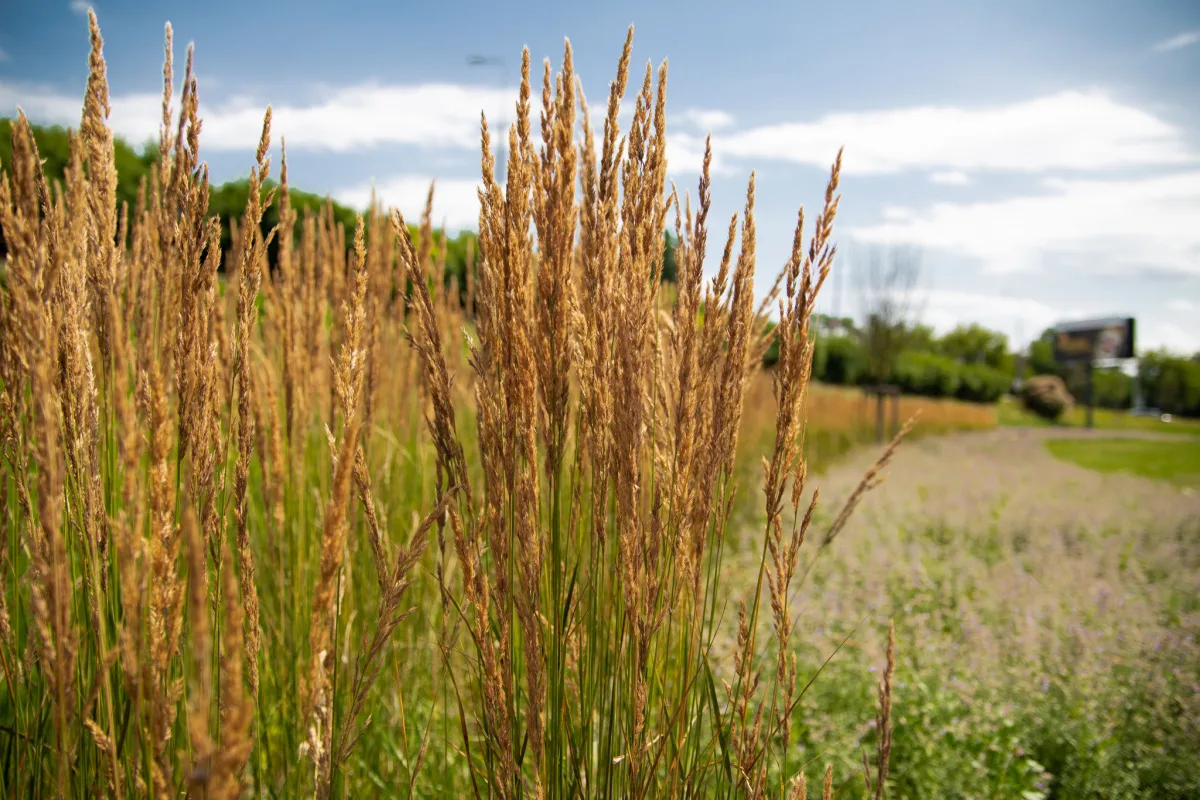
Extremely popular, Feather Reed Grass is probably the most famous of the ornamental grasses. They could even be responsible for the popularity of ornamental grasses entirely!
The most famous of all, ‘Karl Foerster’ stands out in a crowd with strong upright growth that is often still standing in spring.
‘Karl Foerster’ is tall and slender, 3 to 5 feet tall with long golden seed heads. It likes rich moist soils, full sun, and zones 4 to 7.
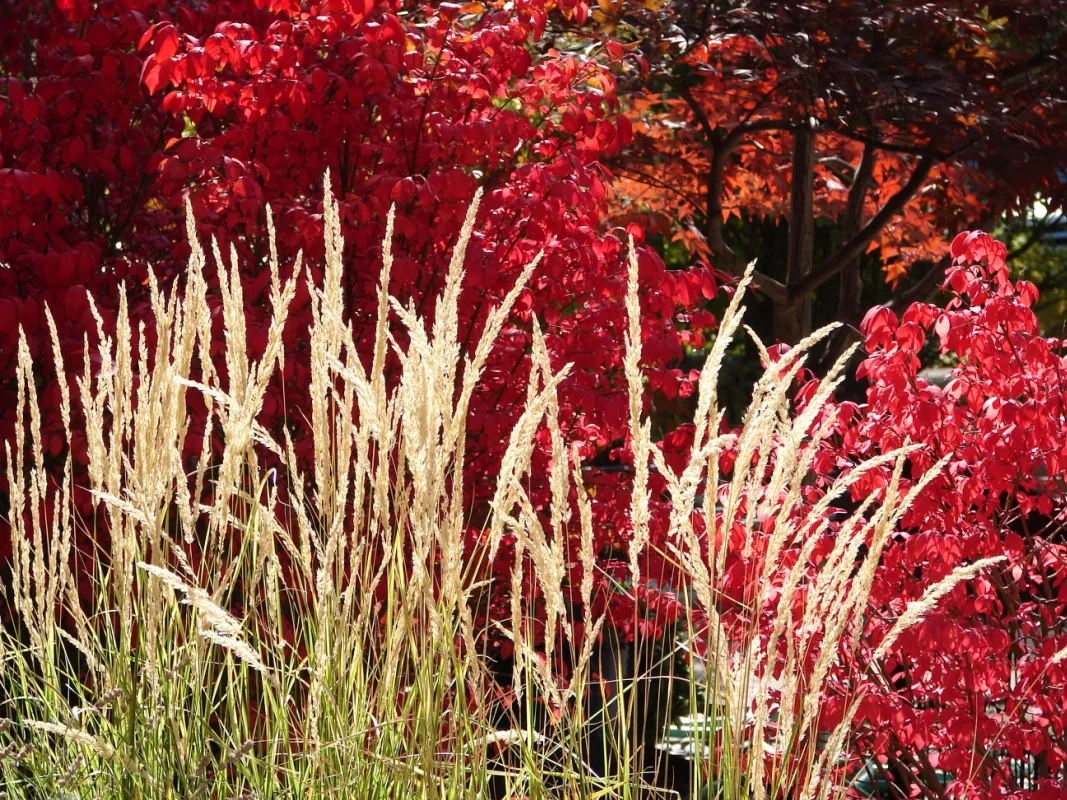
‘Avalanche’ deserves a mention, tolerating wetter soils and providing interest with its white variegated green blades.
5. Blue Fescue (Festuca glauca)
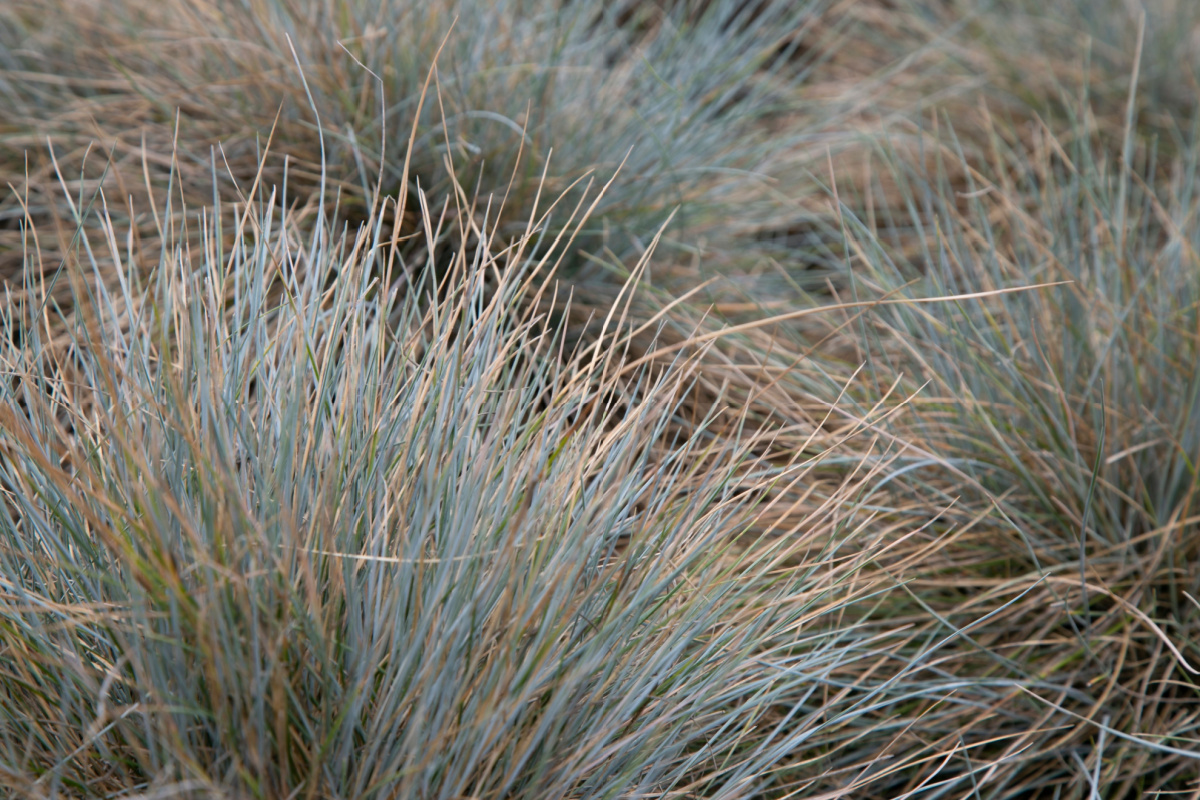
Consistency is Blue Fescues’ virtue with a well-behaved uniform mounding habit.
The small 8 to 12-inch tall and wide domes have finely textured needle-like blades.
Gorgeous as underplanting, Blue Fescue stands out against shrubs with colorful bark or foliage and late-blooming perennials.
These fast-growing perennials get great color in full sun, is drought tolerant but prefer regular watering, and survive zones 4 to 8.
6. Fountain Grass (Pennisetum sp.)
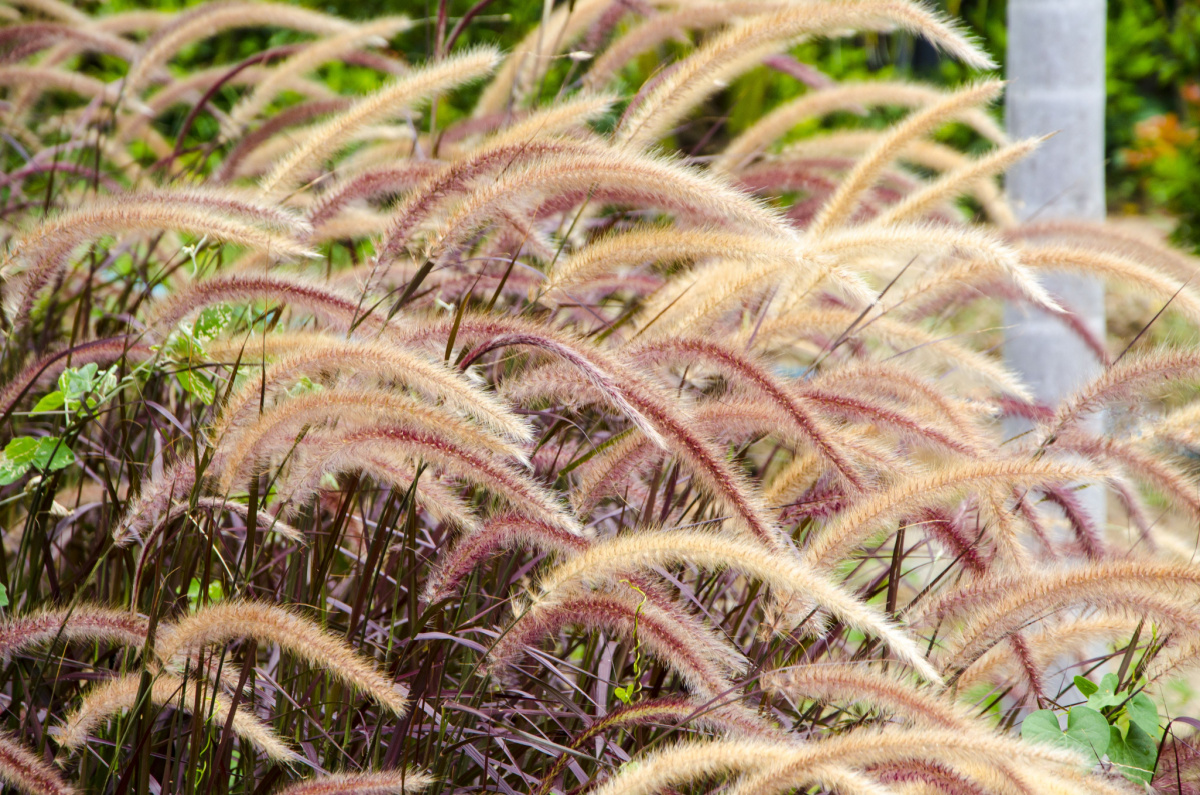
There is possibly an argument as to which is more popular, Fountain Grass or Feather Reed Grass.
Fountain Grass is an arching graceful grass that is often grown as an annual with some species hardy enough to grow as perennials.
Some are small, like ‘Little Bunny’ just 18 inches while others have stems up to 25 feet tall. That’s a tree where I come from!
In fall, it is the colorful fox tail-like arching flower heads that adorn these charming grasses that keep them popular in the landscape and container plantings.
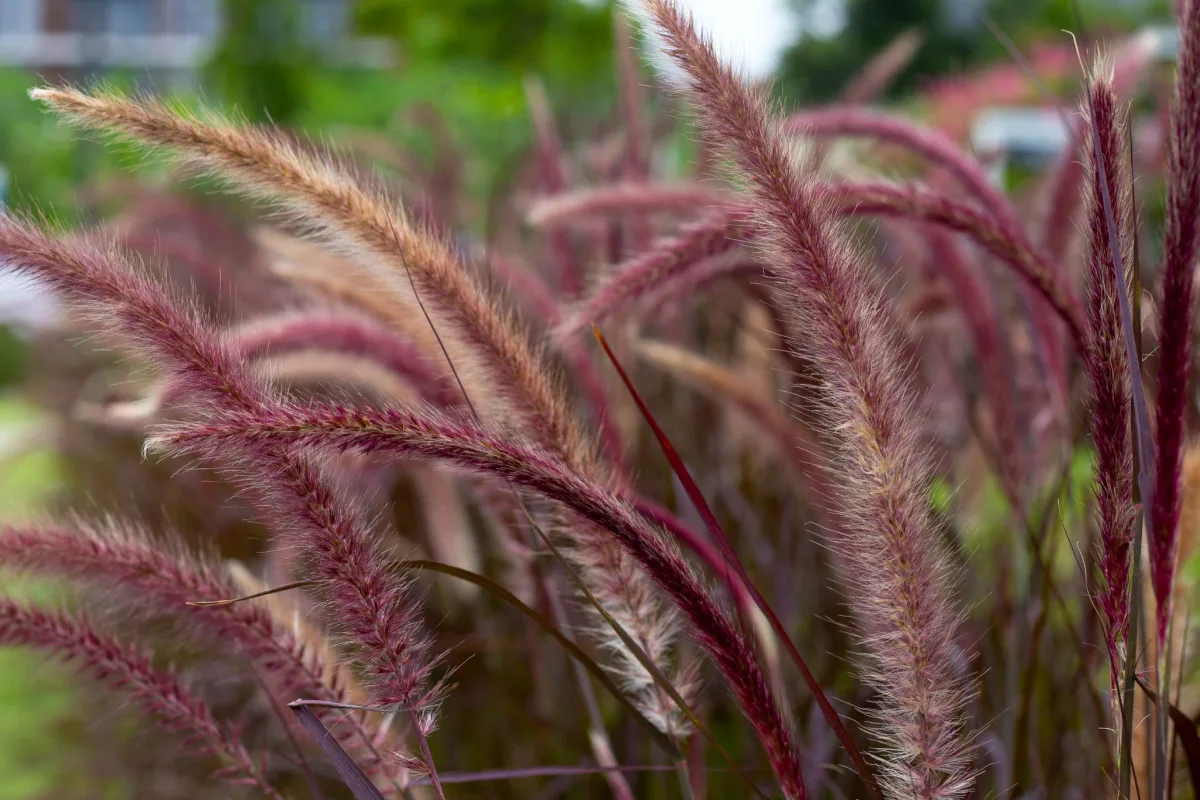
Some varieties can be invasive, escaping cultivation and creating competition for wildlife habitats and native plants.
A popular variety is Purple Fountain Grass, Pennisetum setaceum ‘Rubrum’, adored for its soft plumes that dance in the autumn breeze.
This variety is grown as an annual in climates colder than zones 8 to 11, does not reseed, and reaches 2 to 4 feet tall.
7. Blue Grama Grass ‘Blonde Ambition’ (Bouteloua gracilis ‘Blonde Ambition’)
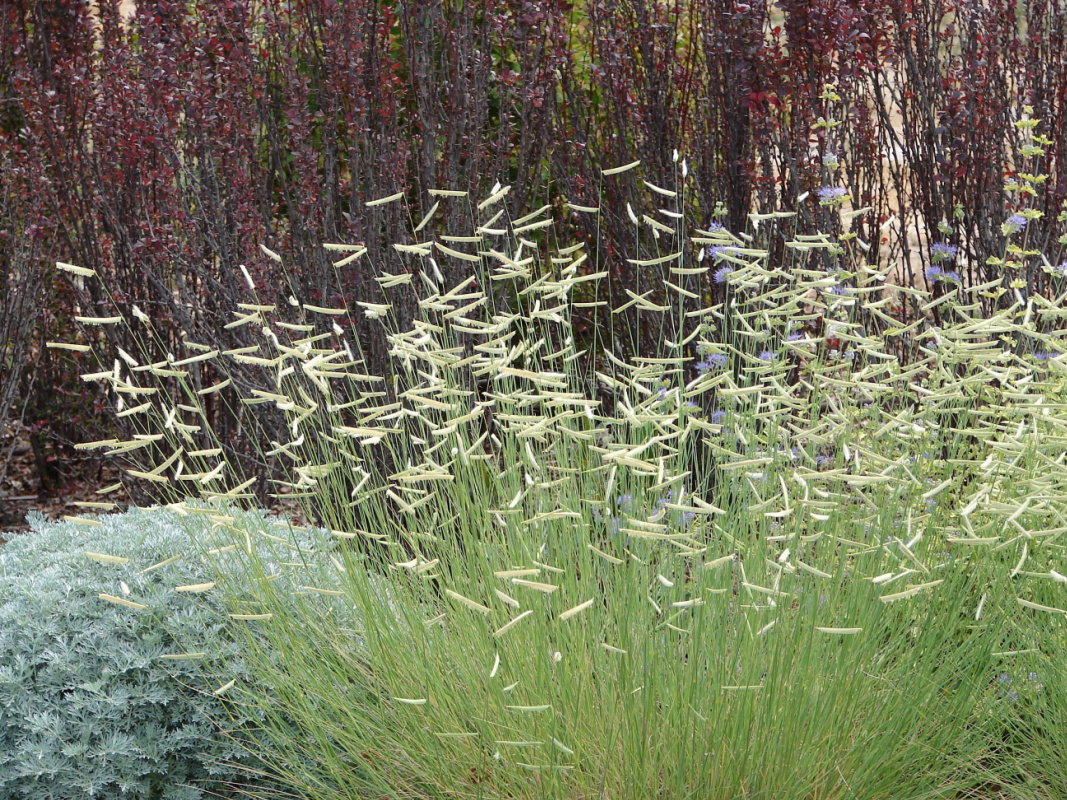
A fall interest grass that is worth mentioning is Blonde Ambition, beloved for its ease of care.
Hardy in zones 4 to 9, Blue Grama Grass holds quivering horizontal seed heads up on stiff 3-foot-tall stems.
While the seed heads persist throughout fall, this drought-tolerant grass thrives in full sun to part shade, looking great in low-maintenance gardens.
8. Red Switchgrass (Panicum virgatum)
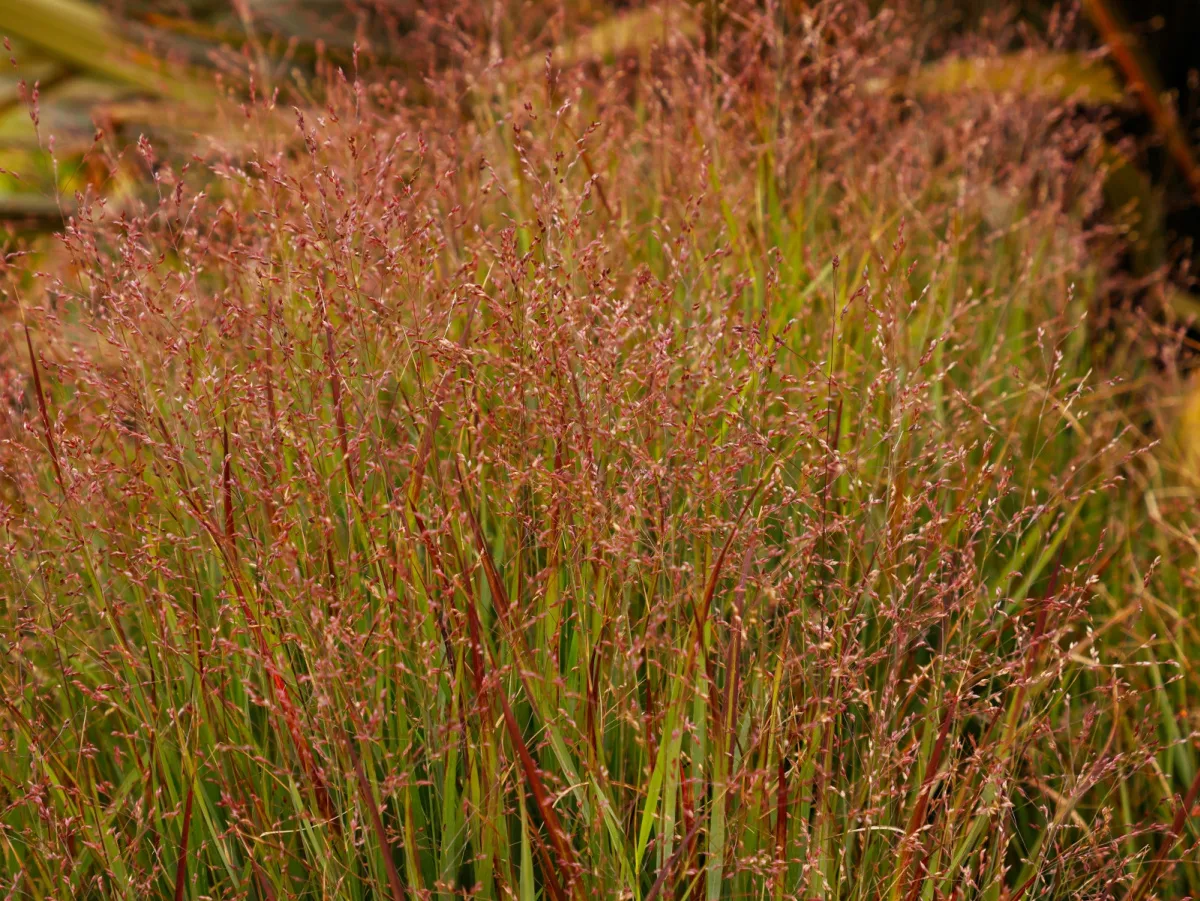
A North American native tall grass, Red Switchgrass has a strong upright growth habit that makes a lovely vertical accent in the garden.
In fall, the green grass transforms into bold reds, yellows, oranges, and burgundy.
Tolerant of both moist and dry conditions, Red Switchgrass grows 3 to 6 feet tall in part sun in zones 5 to 9.
A fall favorite ornamental grass, ‘Shenandoah’ is noted for having the showiest fall colors.
9. Big Bluestem (Andropogon gerardii)
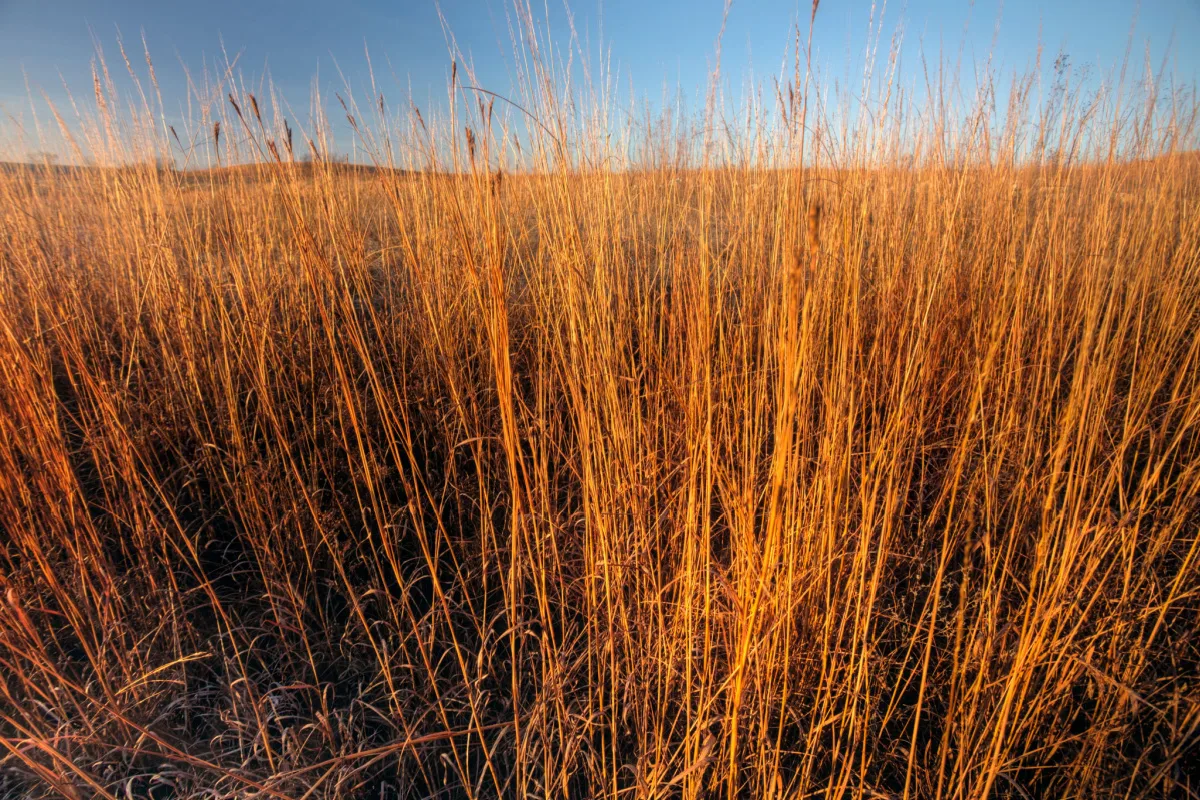
Big Bluestem is a native grass that is upright and forms a 3- to 8-foot-tall narrow clump.
In fall, Big Bluestems’ blue-green leaves turn rust color.
While shorter, the variety ‘Red October’ turns candy-apple red and grows 5 to 6 feet tall.
‘Windwalker®’, well named for its supple grace in the wind, turns pink and purple in fall.
Big Bluestem needs full sun. They prefer moist to average soil but can be very drought tolerant once established if necessary.
Hardy in zones 3 to 9, Big Bluestem is a tall upright native grass that waves gracefully in the autumn winds.
Edible Ornamental Grasses – Corn, Sorghum, and Millet!
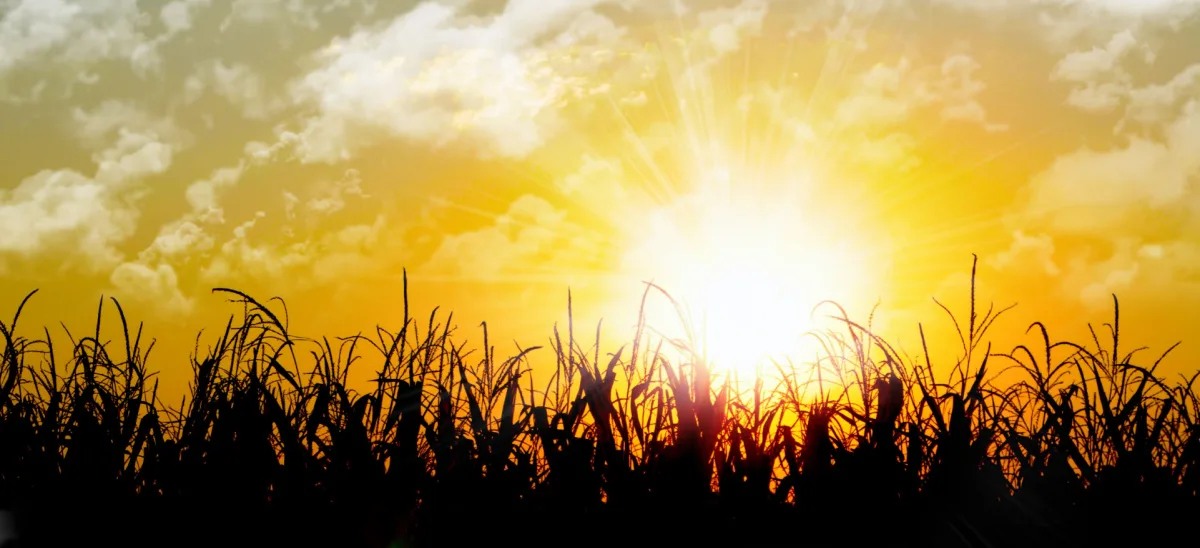
Ornamental grasses in the garden are prized because they provide habitat and food sources for wildlife, among their many attributes.
But humans have been eating grasses and grass seeds for millions of years.
And being human, we’ve cultivated some absolutely stunning edible ornamental grasses!
To harvest food from ornamentals, you might choose to avoid herbicides, pesticides, and synthetic fertilizers.
10. Millet (Pennisetum glaucum)
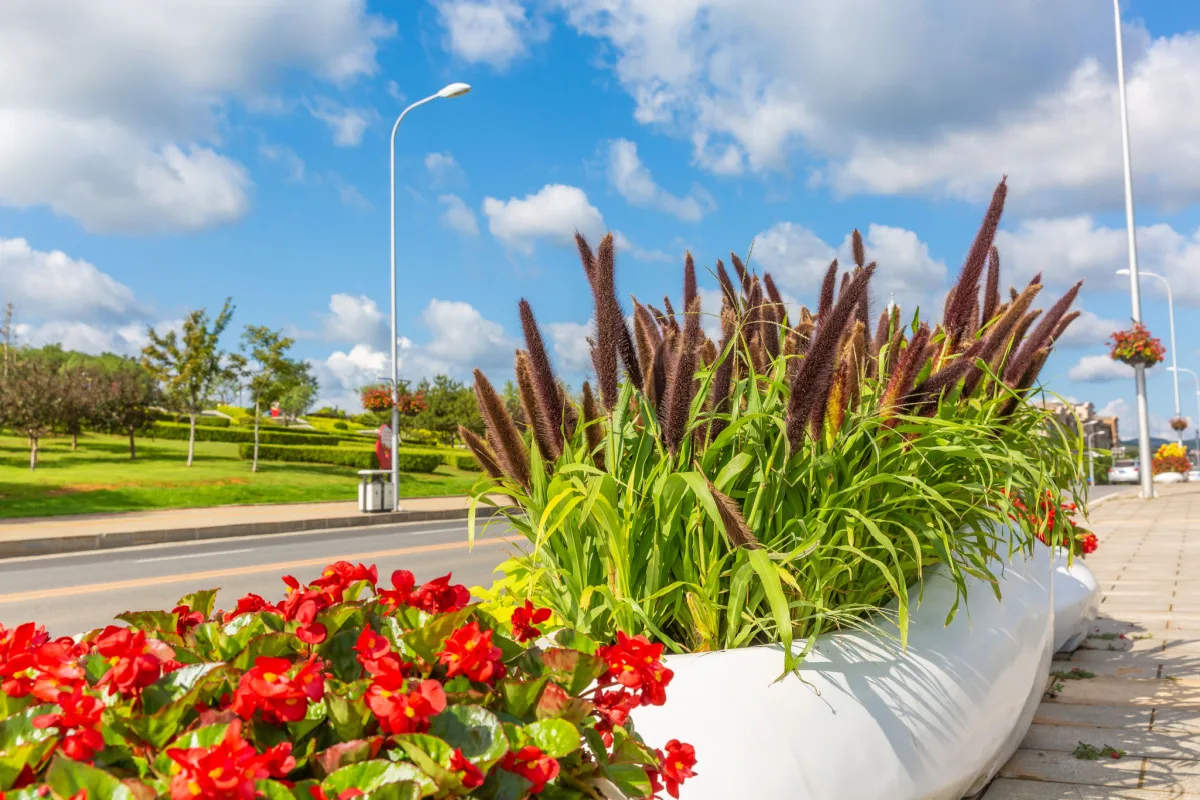
If Pennisetum sounds familiar it’s because it is the same genus name as Fountain Grass.
Pennisetum glaucum ‘Purple Majesty’ was developed as an ornamental, winning the 2003 All-America Selections Gold Medal Winner.
Many annual ornamental varieties have been developed from the humble millet, one of the oldest cultivated grains.
Ornamental millet produces large 8- to 40-inch-long flower heads that are perfect natural bird feeders.
Making a striking accent plant, ornamental millet grows 2 to 5 feet tall with rich foliage and long cylindrical inflorescences.
11. Corn (Zea mays)
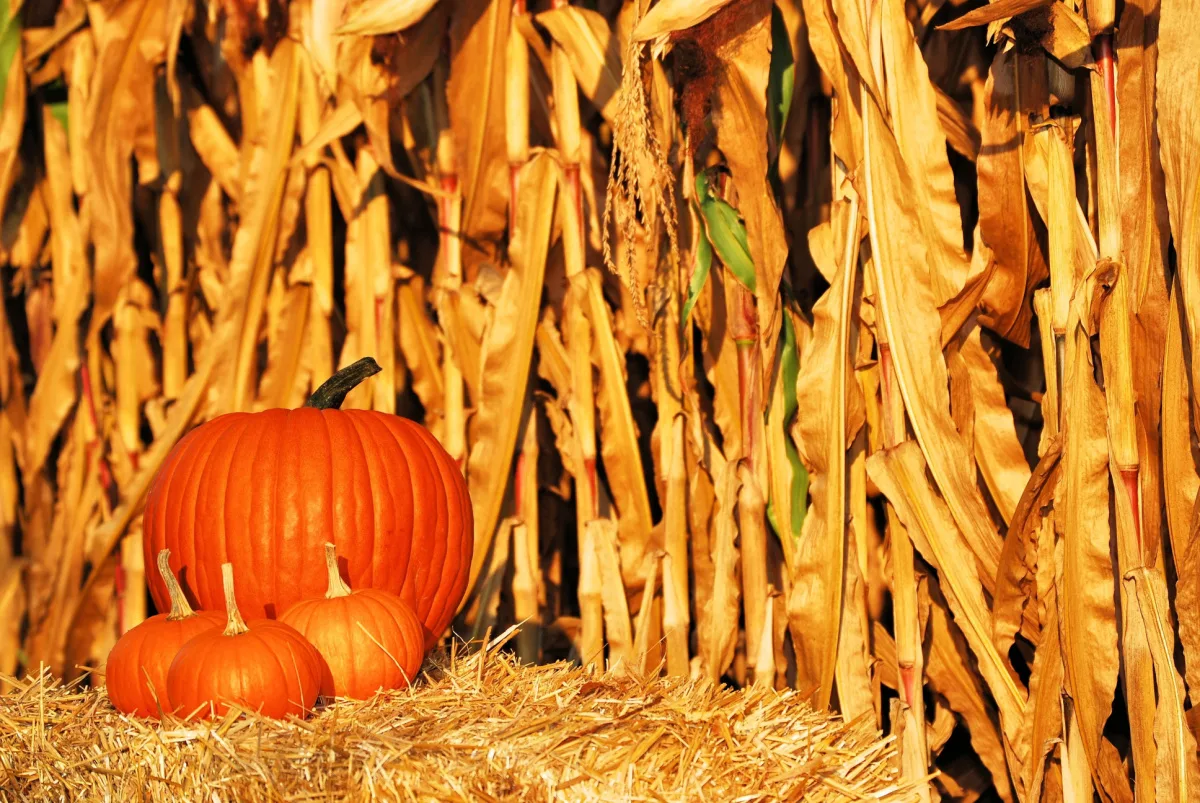
An outstanding ornamental annual, corn plants with their leafy stalks have innumerable varieties.
The terminal tassels and multicolored stalks are used in fall displays.
Many varieties have variegated, striped, multicolored, or otherwise visually interesting foliage that improves in fall.
A unique plant, corn makes an unusual accent or border plant in the garden.
12. Sorghum Broom Corn (Sorghum bicolor)
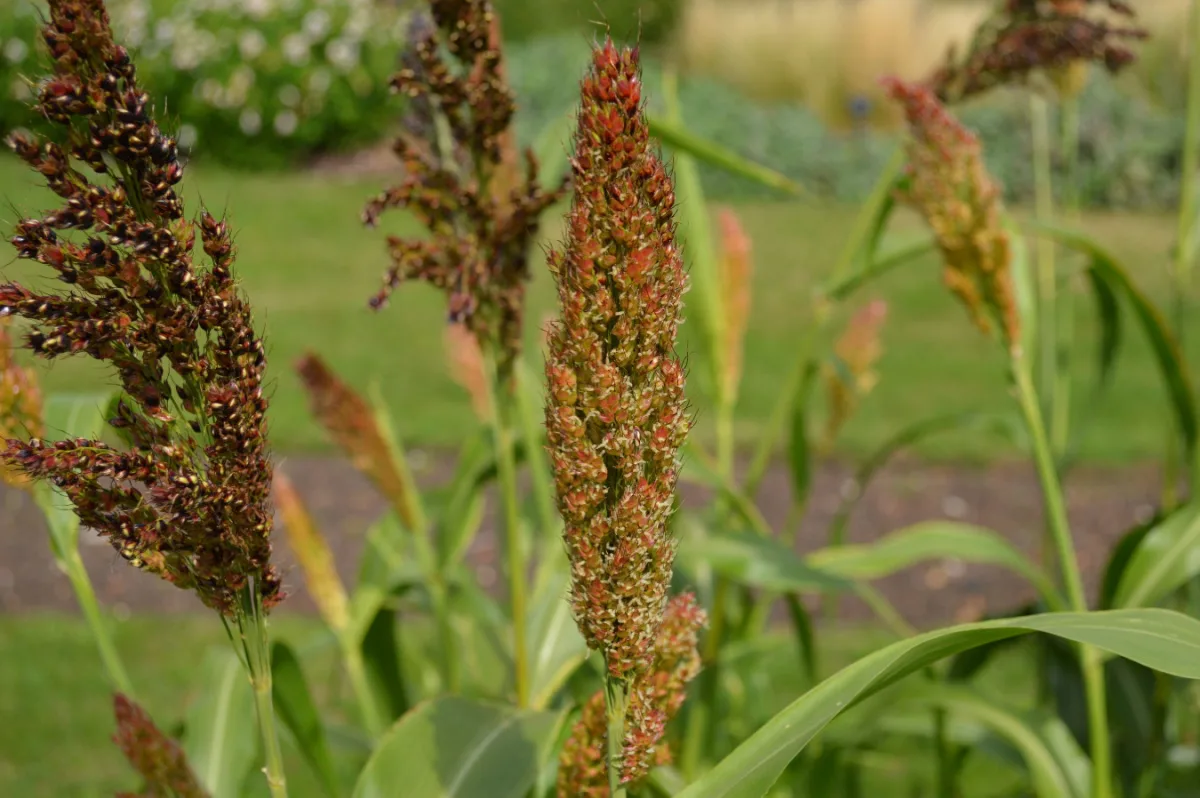
The huge 24- to 36-inch-long seed heads of this tall heirloom cousin of corn make a beautiful fall compliment to the garden.
The multicolored seedheads are loosely packed and top the very tall grass plants in fall.
Plants are annuals and reach maturity in 100 to 110 days, just in time for fall decorating!
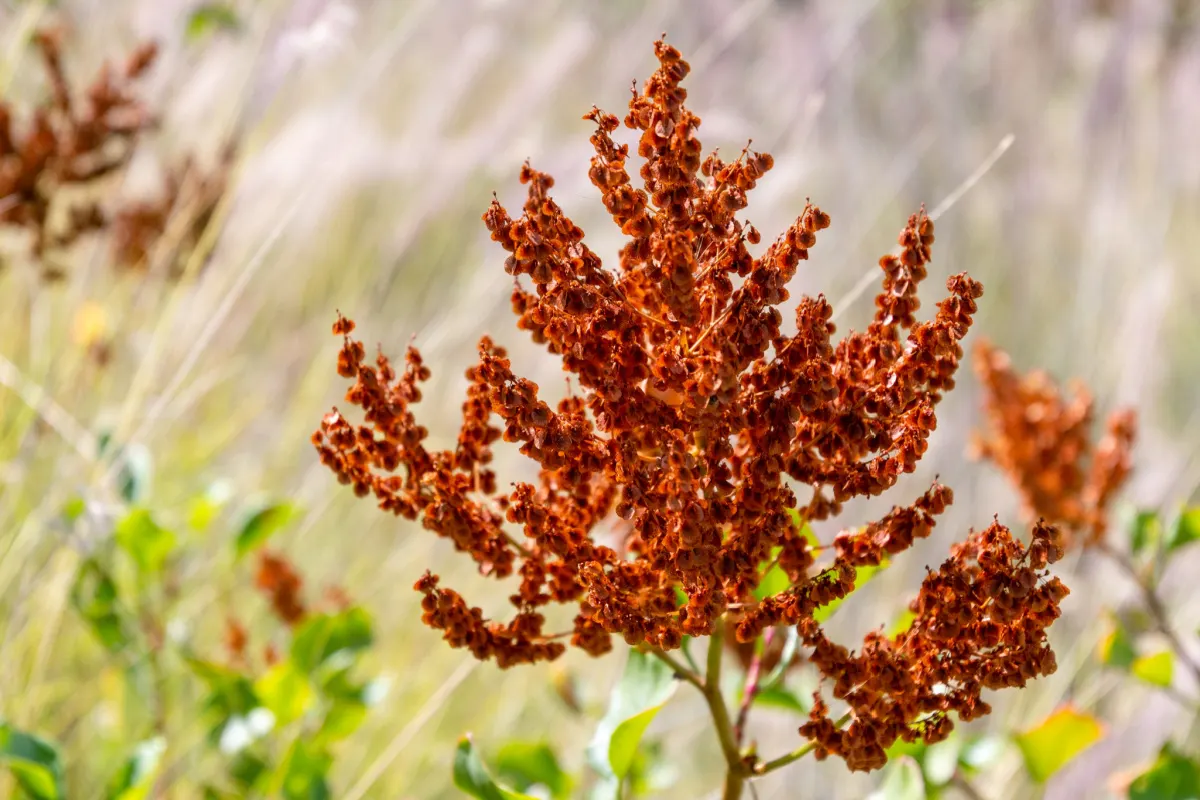
Invasive Ornamental Grass Varieties
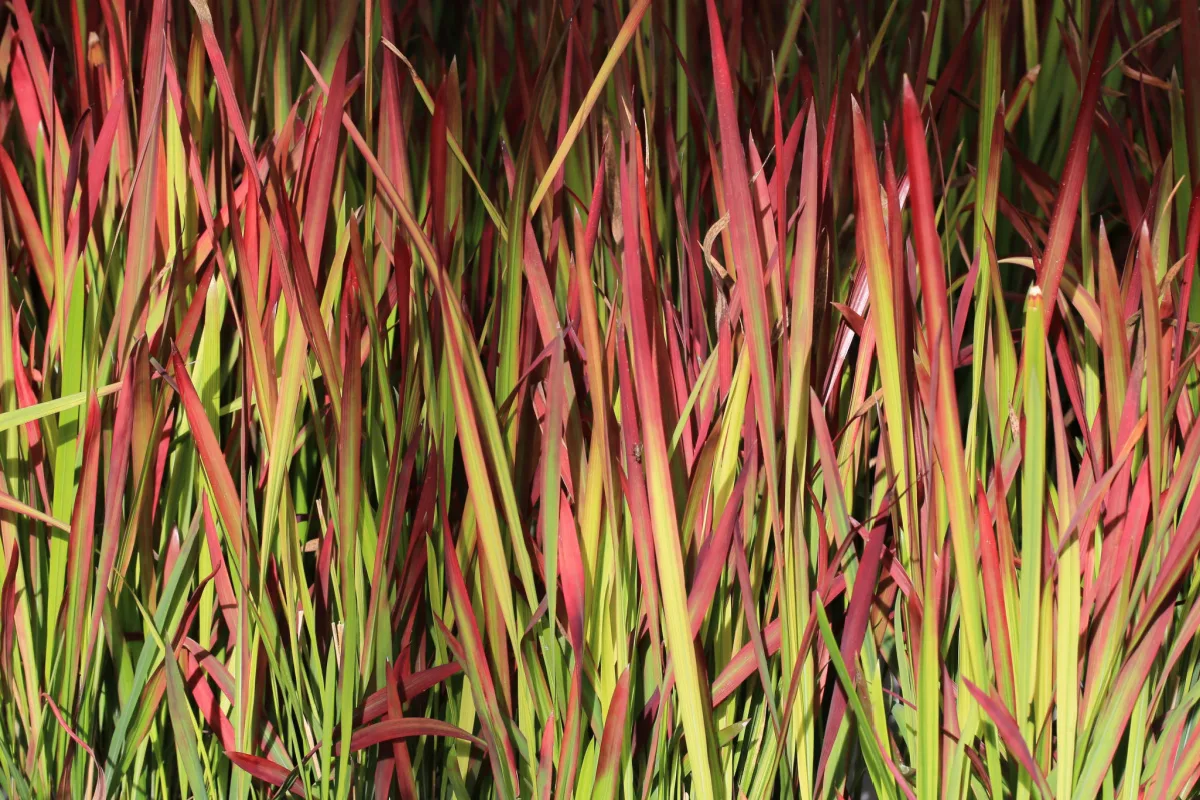
Many of us gardeners love trying new varieties, colors, and ideas, but we always want to make sure we grow things that can’t reseed so freely that they escape cultivation.
Invasive plants that escape into the natural environment out compete and displace native plants that also serve as food sources for wildlife, birds, and pollinators.
Avoid planting these aggressive or invasive ornamental grasses in areas at risk.
- Maiden grass (Miscanthus sinensis)
- Pampas grass (Cortaderia selloana)
- Japanese blood grass (Imperata cylindrica ‘Rubra’)
- Giant reed (Arundo donax)
- Weeping lovegrass (Eragrostis curvula)
At Season’s End
All good things must come to an end. One of the things we love most about fall is that it is the end of the super busy spring and summer garden season. A time to enjoy the fruits of the labor. But this too shall pass into the hopefully warm, quiet, cozy times of winter.
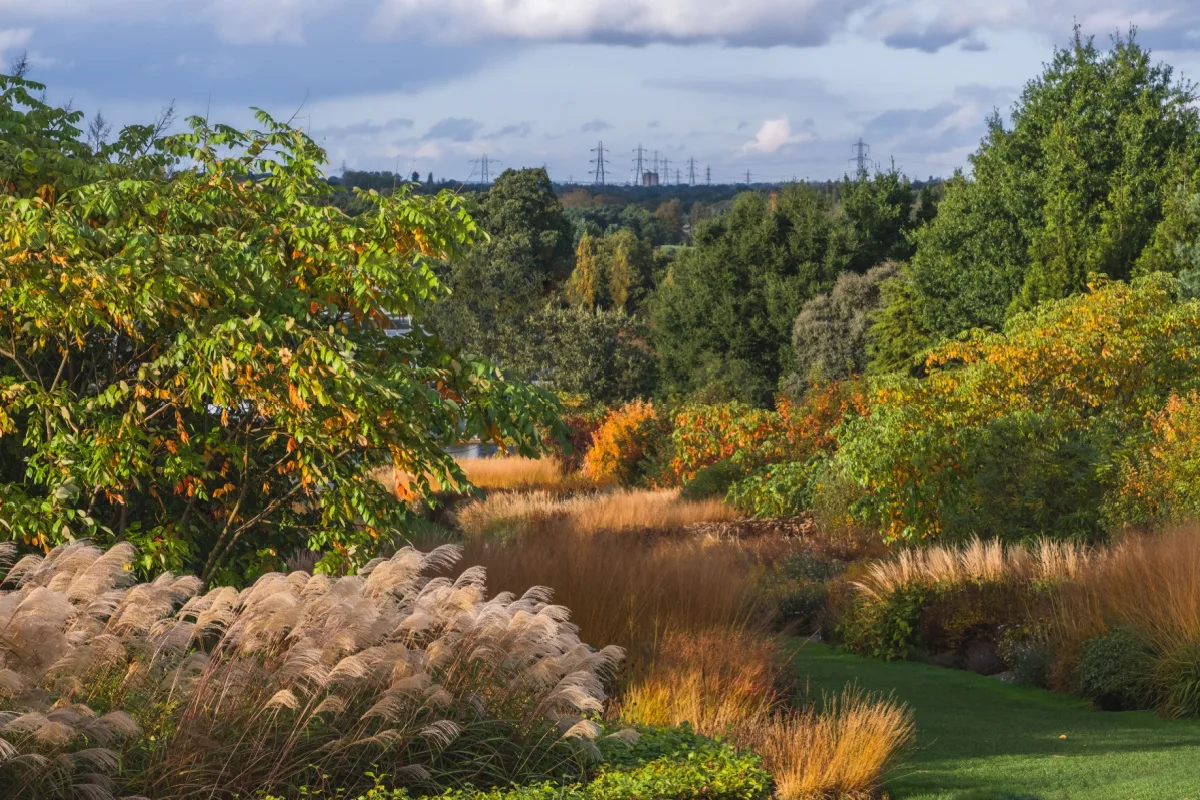
Even as winter approaches, ornamental grasses look fantastic draped in frost, form structure in the winter garden, and provide habitat and food sources for wildlife.
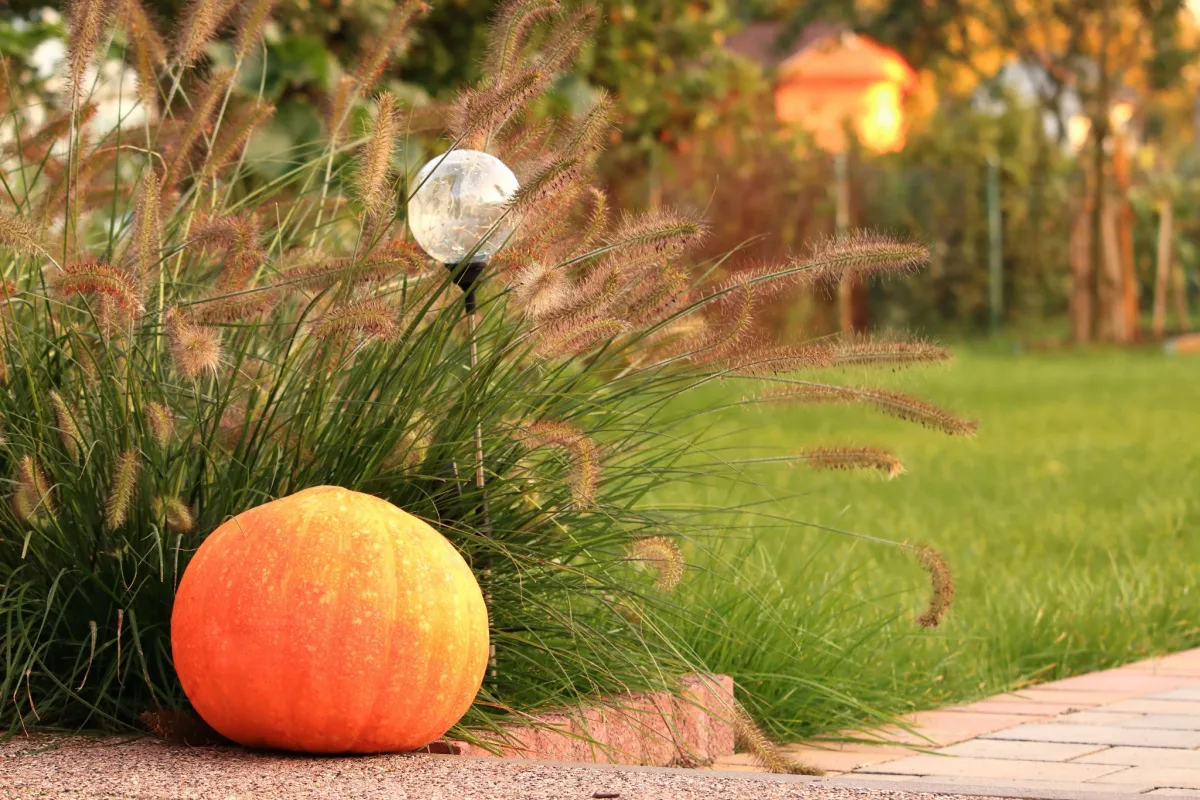
Past their show-stealing prowess of fall, ornamental grasses can be left in play, or harvested for use as dried flower crafts and winter indoor décor.
